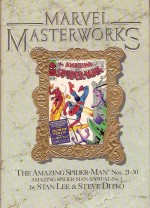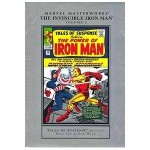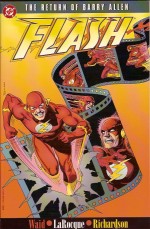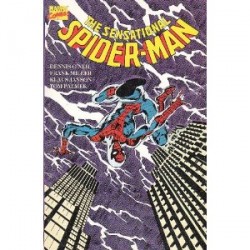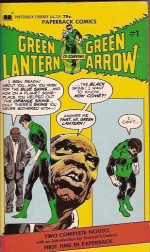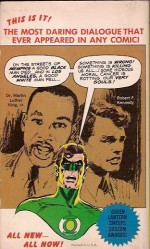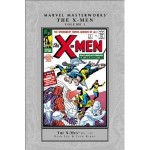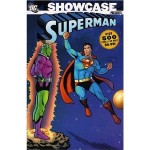
By Otto Binder, Jerry Coleman, Bill Finger, Jerry Siegel, Wayne Boring, Al Plastino, Curt Swan & various (DC Comics)
ISBN: 978-1-4012-0758-8
Although we all think of Jerry Siegel and Joe Shuster’s iconic creation as the epitome of comicbook creation the truth is that very soon after his launch in Action Comics #1 he became a multimedia star and far more people have seen or heard the Man of Steel than have ever read him – and yes, that does include the globally syndicated newspaper strip. By the time his 20th anniversary rolled around he had been a regular on radio, starred in a series of astounding animated cartoons and two movies and just ended his first smash live-action television serial. In his future were three more (Superboy, Lois & Clark and Smallville), a stage musical, a franchise of stellar movies and an almost seamless succession of TV cartoons beginning with The New Adventures of Superman in 1966 and continuing ever since. Even Krypto got in on the small-screen act…
It’s no wonder then that the tales from this Silver Age period should be so draped in the wholesome trappings of Tinseltown – even more so than most of celebrity-obsessed America. It didn’t hurt that editor Whitney Ellsworth was a part-time screenwriter, script editor and producer as well as National DC’s Hollywood point man.
However, that’s not all there is to these gloriously engaging super-sagas culled from Action Comics #241-257 and Superman #122-133, reliving the period June 1958 to November 1959 in crisp, clean black and white in this first economical Showcase Presents collection.
By the mid-1950s Superman had settled into an ordered existence. Nothing could really hurt him, nothing would ever change, and thrills seemed in short supply. With the TV show cementing the action, writers increasingly concentrated on supplying wonder, intrigue, imagination and, whenever possible, a few laughs as well.
The adventure begins with Action Comics #241 and ‘The Key to Fort Superman’ a fascinating and clever puzzle-play guest-featuring Batman, written by Jerry Coleman and illustrated by Wayne Boring & Stan Kaye, wherein an impossible intruder vexes the Man of Steel in his most sacrosanct sanctuary, after which Superman #122 (July, 1958) presented three yarns by veteran scripter Otto Binder beginning with ‘The Secret of the Space Souvenirs’ (illustrated by Al Plastino) as a temporary madness seemed to grip the Man of Tomorrow as he gathered artefacts for a proposed time-capsule, ‘Superman in the White House’ a fanciful dream by Jimmy Olsen also drawn by Plastino and the Boring/Kaye bamboozler which finds the hero investigating an outbreak of super-powers at a US military base in ‘The Super-Sergeant’…
That same month Binder & Plastino introduced both the greatest new villain and most expansive new character concept to the series had seen in years in The Super-Duel in Space’ (Action Comics #242) which saw an evil alien scientist named Brainiac attempt to add Metropolis to his collection of miniaturised cities in bottles.
As well as a titanic tussle in its own right, this tale completely changed the mythology of the Man of Steel, by introducing Kandor, a city full of Kryptonians who had escaped the planet’s destruction when Brainiac captured them. Although Superman rescued his fellow survivors, the villain escaped to strike again, and it would be years before the hero could restore the Kandorians to their true size.
Superman #123 (August 1958) featured ‘The Girl of Steel’ by Binder, Dick Sprang & Kaye which tested the potential of a distaff Supergirl as part of a three-chapter yarn involving a magic wishing totem, which tragically segued into ‘The Lost Super-Powers’ before granting the hero’s greatest dream and facilitating ‘Superman’s Return to Krypton’. Action #243 by Binder & Boring saw Superman mysteriously transformed into a beast in ‘The Lady and the Lion’ after which Superman #124 provided the intriguing menace of ‘The Super-Sword’ by Coleman & Plastino, Binder & Kurt Schaffenberger’s delightful desert island drama wherein Lois Lane became ‘Mrs. Superman’ and Clark Kent’s investigation of construction industry corruptions which compelled him to become ‘The Steeplejack of Steel’ (Binder, Boring & Kaye).
Curt Swan pencilled Binder’s ‘Super-Merman of the Sea’ (inked by Kaye) in Action #244: a canny mystery wherein the Man of Steel abandoned the surface world for an alien aquatic princess, after which Boring & Kaye delineated Binder’s compelling thriller ‘The Shrinking Superman!’ featuring an insidious menace from the Bottle City of Kandor…
‘Lois Lane’s Super-Dream’ (Coleman & Schaffenberger) opened Superman #125 (October-November 1958) with another potentially offensive and certainly sexist parable wherein the plucky news-hen learnt a salutary lesson about powers and responsibility whilst ‘Clark Kent’s College Days’ (illustrated by Plastino) began an occasional series of Untold Tales of Superman by revealing just how, when and why Superboy became the Man of Tomorrow, before Boring & Kaye concluded Coleman’s hat-trick with ‘Superman’s New Power’ as the hero gained new and incomprehensible abilities with catastrophic consequences
Action #246 featured ‘Krypton on Earth!’ (Binder, Boring & Kaye) as a trip to tourist attraction “Krypton Island†revealed a crafty criminal scam whilst #247 presented ‘Superman’s Lost Parents!’ (Binder & Plastino) wherein a criminal scheme to reveal the hero’s secret identity prompted an extreme face-saving solution, after which Superman #126 had Binder, Boring & Kaye reveal ‘Superman’s Hunt for Clark Kent’ a thrilling tale of amnesia and deduction whilst ‘The Spell of the Shandu Clock’ by Coleman, Boring & Kaye, provided spooky chills and clever ploys to outwit a malevolent mastermind and ‘The Two Faces of Superman’ (Coleman & Schaffenberger) again saw conniving Lois learn a much-needed lesson in humility.
Action #248 (January 1959) was a rare contribution from Bill Finger, illustrated by Boring & Kaye as the Caped Kryptonian became ‘The Man No Prison Could Hold!’ to topple a war criminal tyrant whilst Superman #127 opened with another Untold Tale of Superman, ‘When There Was No Clark Kent!’ (Coleman, Swan & Kaye) as an accident temporarily deprived the hero of his treasured alter ego, after which Coleman, Boring & Kaye exposed ‘The Make-Believe Superman’ as a depressed dad tried to impress his son with a most preposterous fib before another hugely popular character debuted in ‘Titano the Super-Ape!’. The chimpanzee who became a giant ape with Kryptonite vision was one of the most memorable “foes†of the period, courtesy of Binder, Boring & Kaye’s sublime treatment combining action, pathos and drama to superb effect.
‘The Kryptonite Man!’ by Binder & Plastino in Action #249, saw Lex Luthor deliberately irradiate himself with Green K to avoid capture, but his evil genius was no match for the hero’s sharp wits, used with equal aplomb in ‘The Eye of Metropolis!’ (Finger & Boring) as a prominent TV journalist sought to expose Superman’s secret identity in #250.
Bill Finger scripted the entirety of #128 as ‘Superman versus the Futuremen’ (Boring & Kaye) and ‘The Secret of the Futermen’ saw the Metropolis Marvel framed for heinous crimes and hijacked to the impossible year of 2000AD before outwitting his abductors and retuning in time to encounter ‘The Sleeping Beauty from Krypton!’ – actually Lois in another hare-brained scheme to trap her beloved into marriage, illustrated by the unmistakable and deliciously whimsical Kurt Schaffenberger.
‘The Oldest Man in Metropolis!’ by Robert Bernstein & Plastino, saw an unfortunate lab accident age Superman decades overnight in Action #251 whilst Superman #129 (May 1959) revealed ‘The Ghost of Lois Lane’ (Coleman, Boring & Kaye) to be anything but and Binder & Plastino’s ‘Clark Kent, Fireman of Steel!’ depicted the reporter’s aggravating and hilarious “luck†as a temporary fire-fighter before introducing the bewitching mermaid Lori Lemaris in ‘The Girl In Superman’s Past’ – another moving Untold Tale of Superman (from Finger & Boring) which again refined the Man of Steel’s intriguing early life.
Action Comics #252 (May 1959) would have been significant enough merely for introducing the threat of John Corben, a criminal whose crushed body was replaced by a robot body and Kryptonite heart to become ‘The Menace of Metallo!’ (by Bernstein & Plastino) but a new back-up feature also began in that issue which utterly revolutionised the Man of Tomorrow’s ongoing mythology.
‘The Supergirl from Krypton!’ introduced Kal-El’s cousin Kara Zor-El in another captivating, groundbreaking yarn by Binder & Plastino. The Maid of Might would occupy the back of Action and alternate covers for a decade and more to come, carving her own unique legend (see Showcase Presents Supergirl volumes 1 and 2)…
Issue #253 featured ‘The War Between Superman and Jimmy Olsen!’ by Alvin Schwartz, Swan & Kaye as an alien presence gave the boy reporter super-powers and a mania to conquer the world whilst Superman #130 presented ‘The Curse of Kryptonite!’ by Binder & Plastino, wherein the Man of Tomorrow relived his past experiences with the lethal mineral; ‘The Super-Servant of Crime!’ by Bernstein, Swan & John Sikela which finds the hero turning the tables on a petty crook who thinks he’s fooled the Action Ace, and ‘The Town That Hated Superman!’ (Binder, Boring & Kaye): a happy hamlet which had outlawed the hero and he simply had to know why…
‘The Battle with Bizarro!’ (Action Comics #254, by Binder & Plastino) re-introduced an imperfect duplicate super-being who had initially appeared in a well-received Superboy story (#68, from the previous year), courtesy of Luthor’s malfunctioning duplicator ray. Even way back then high sales trumped death and so popular was the fatally-flawed character that the tale was continued over two issues, concluding with ‘The Bride of Bizarro!’ in #255, an almost unheard of luxury back then, but here that bombastic, traumatic conclusion is separated by the contents of Superman #131, which firstly reintroduced a long-vanished pestiferous annoyance with ‘The Menace of Mr. Mxyzptlk!’ by Coleman & Plastino, before Lois Lane was granted a tantalising glimpse of ‘Superman’s Future Wife’ (Bernstein & Schaffenberger) and ‘The Unknown Super-Deeds’ revealed hitherto hidden connections with the Daily Planet staff long before Superboy left Smallville in another Untold Tale of Superman from Binder & Plastino.
Action #256 seemingly unleashed ‘The Superman of the Future’ (Binder, Swan & Kaye) whilst in Superman #132 (October 1959) Batman and the projections of a super-computer showed what might have happened if Superman had grown up on an unexploded Krypton in the three chapter epic ‘Superman’s Other Life’, ‘Futuro, Super-Hero of Krypton!’, ‘The Superman of Two Worlds!’ by Binder, Boring & Kaye.
Action #257 revealed Clark Kent as ‘The Reporter of Steel!’ after he was hit by a ray from mad scientist Luthor in a cunning yarn by Binder, Boring & Kaye before the contents of Superman #133 brings to a close this premier compendium with ‘The Super-Luck of Badge 77’ (Binder & Plastino) as the reporter tried his hand as a beat cop, before the first new tales by co-creator Jerry Siegel in nearly a decade: ‘How Perry White Hired Clark Kent’ (art by Plastino) and the wryly light-hearted ‘Superman Joins the Army!’ illustrated by Boring & Kaye.
Superman has proven to be all things to all fans over his decades of existence and with the character undergoing another radical overhaul at this time these timeless tales of charm and joy and wholesome wit are more necessary than ever: not just as a reminder of great tales of the past but as an all-ages primer of the wonders still to come…
© 1959-1963, 2005 DC Comics. All Rights Reserved.

